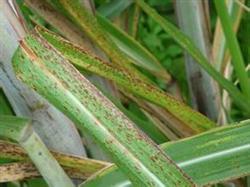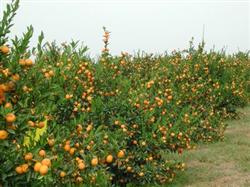How to apply fertilizer for high yield of sugarcane

Sugarcane has a long growth period and high yield. It can generally produce 5000-8000 kg of sugarcane per mu. It absorbs more nutrients during the whole growth period and is one of the crops that need a large amount of fertilizer. According to the study, for every 1000 kg of sugarcane, it is necessary to absorb 1.5kg of nitrogen, 1.5kg of phosphorus, 2.5kg of potassium and 0.75kg of calcium from the soil. Sugarcane life is divided into seedling stage, tillering stage, extension stage and mature stage, and the fertilizer requirements are different in different growth stages. the general law of fertilizer absorption is "less at both ends and more in the middle", that is, in the seedling stage, the urgent need for fertilizer is less, and the demand for nitrogen is slightly higher, followed by phosphorus and potassium. In the tillering stage, the amount of fertilizer required increases gradually, and the absorption of the three elements accounts for about 10% and 20% of the whole period. Entering the extension period, the absorption of the three elements increased greatly, accounting for more than 50% of the whole period. at this time, it was the season of high temperature, heavy rain and strong light, and sugarcane had the highest utilization rate of light energy and nutrients, which was the key fertilization period. After entering the mature period, the fertilizer requirement of sugarcane decreased gradually. According to the nutritional requirements and characteristics of sugarcane, high-yield cultivation and fertilization should be carried out according to the principles of "combination of nutrition and growth needs, combination of organic fertilizer and inorganic fertilizer, combination of long-acting fertilizer and quick-acting fertilizer". Organic fertilizer should be used as the main base fertilizer, and a certain amount of compound fertilizer should be applied, which can create good conditions for rapid sprouting, root elongation and early and strong tillering of sugarcane. Generally, about 2000 kg of fully mature organic fertilizer is applied per mu, and 20-30 kg of general-purpose compound fertilizer (15% MU15% MY15%) compound fertilizer. When applying, planting sugarcane in spring first opened the planting ditch, then applied organic fertilizer to the bottom of the ditch, and then applied compound fertilizer on both sides of the ditch. When planting sugarcane in winter, organic fertilizer can be used as cover fertilizer. Early application of seedling fertilizer in sugarcane seedling stage needs less fertilizer but urgently. Early application of seedling fertilizer can not only benefit the growth of sugarcane seedlings and roots, but also promote the growth of leaves and tillers. When sugarcane seedlings grow to 3-4 leaves, apply 8-10 kg of high-nitrogen compound fertilizer per mu, combined with direct hole application of middle tillage and soil cultivation (should be mixed with water hole application in case of drought). If the basal fertilizer and raising seedling fertilizer are sufficient and the seedling is strong, it can be applied at one time at the peak tillering stage, and the amount of fertilizer should be less; if the basal fertilizer is insufficient, the seedling fertilizer is not enough, and the seedling growth is weak, the amount of fertilizer should be increased and divided into two stages (once in the early tillering stage to promote tillering, which is called attack tillering fertilizer. Once applied in the peak tillering stage, to ensure strong tillers, called strong tiller fertilizer) application. Tillering fertilizer is generally applied high-nitrogen and high-potassium compound fertilizer, 8-15 kg per mu, mixed with water hole application (soil cultivation in time after application). Re-application of stem-attacking fertilizer and stem-attacking fertilizer is the key to the yield increase of sugarcane. Generally, it is applied twice at the early and peak elongation stages, with 15-20 kg of high nitrogen compound fertilizer per mu, combined with mid-tillage and large soil cultivation, so as to promote sugarcane root growth, strengthen absorption function and enhance lodging resistance. If there is insufficient phosphorus and potassium in the early stage, phosphorus and potassium fertilizer should be applied to achieve maximum growth without reducing sugar content and yield due to excessive nitrogen fertilizer. In order to promote and maintain the late growth, cultivate the underground sugarcane buds and lay a good foundation for the perennial root in the following year, the strong tail fertilizer should be applied once with 5-8 kg compound fertilizer per mu about 2 months before maturity. However, it should be noted that the application time of strong tail fertilizer should not be too late and the dosage should not be too much, otherwise it will lead to the delay of maturity and the decrease of sugar content. In addition, if the phenomenon of de-fertilizing occurs one month before harvest, 1-2 times of extra-root topdressing should be carried out. 0.2 kg of potassium dihydrogen phosphate per mu and 0.5 kg of urea and 100 kg of water should be sprayed evenly from top to bottom.
- Prev

Drought resistance technology of sugarcane
1. Select improved varieties with disease resistance and reasonable crop rotation. two。 Fertilizing the soil, increasing the application of organic fertilizer and applying more phosphorus and potassium fertilizer can reduce the occurrence of brown streak. 3. Remove the seriously diseased leaves in time, reduce the source of bacteria in the field, and control the spread. 4. Peel off the old foot leaves, occasionally remove ineffective, sick and weak plants, make the sugarcane field ventilated and reduce the sugarcane field.
- Next

High yield technique of early Fruit in three years after planting navel Orange
There are two kinds of fertilization for navel orange: soil fertilization and extra-root topdressing, mainly soil fertilizer. (1) soil fertilization: soil fertilization should not only benefit the root system to absorb fertilizer as soon as possible, but also prevent the root system from fertilizer damage. Therefore, fertilization should be made according to time, tree and fertilizer. Adhere to shallow root application, root deep application, spring and summer shallow application, autumn and winter.
Related
- Moge, come on! The staff of the peasant association in the producing area of cantaloupe were frightened when the crowd gathered.
- Causes and Solutions of low Fruit setting rate of Apple
- Symptoms and control measures of passion fruit virus disease
- Fruit growing lesson: how do apple orchards keep high yields?
- Can you build orchards in the mountains? What are the pros and cons?
- How to manage the coloring period of Crisson grape?
- This paper introduces the processing technology of two kinds of fig products.
- How much is a month for retired teachers in rural areas by 2020?
- How can strawberry planting increase sugar content? We should pay attention to management in many aspects.
- What are the cultivation techniques on how to improve the yield of golden fruit?

